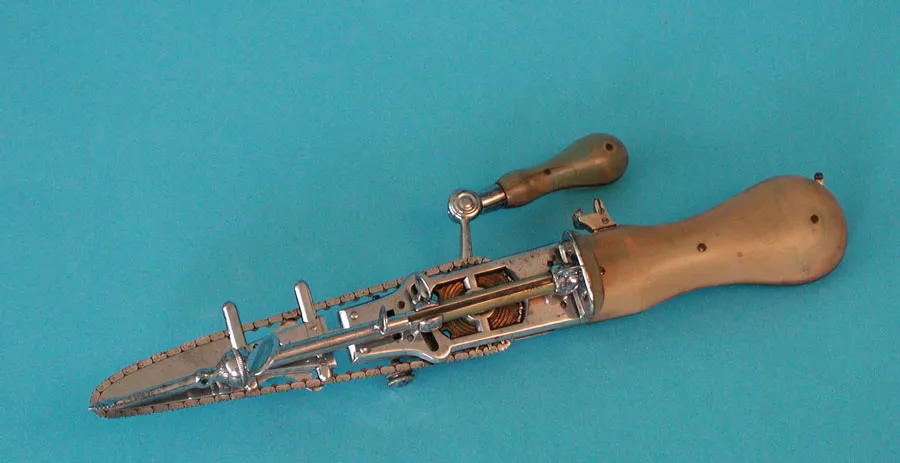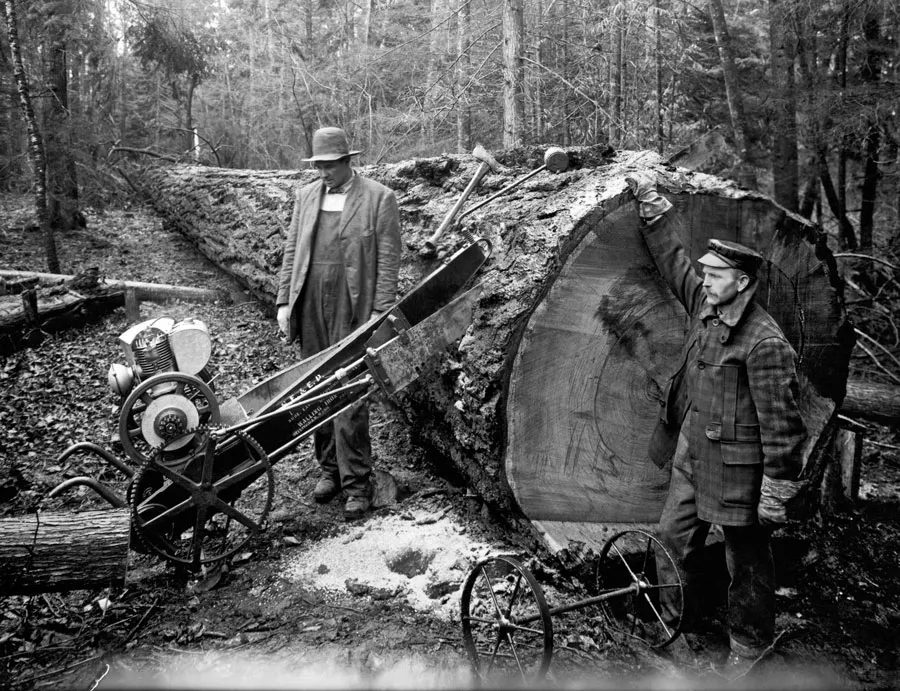If you’re a lumberjack or otherwise, you might be wondering why the chainsaw was invented.
These useful sawing tools have been used for years, with early devices cutting through wood in the 19th century. The chainsaw as we know it, though, appears to have begun life as a medical instrument – one used to assist in childbirth.
Although the details below are doubtlessly gruesome, rest assured that doctors of the time didn’t stick fuel-powered chainsaws inside women.
The original chainsaw – invented by Scottish doctors John Aitken and James Jeffray – was originally designed as a “flexible saw… contrived to be used when there is ossification [ostructive bone]," according to 1785's Principles Of Midwifery, Or Puerperal Medicine.
The crude chainsaw was designed to aid and speed up the process of symphysiotomy (widening the pubic cartilage) and the removal of disease-laden bone.
The flexible saw, which later became the osteotome (developed by German physician Bernhard Heine in 1830 – see below) was used to cut away flesh, cartilage, and bone from the mother during childbirth if the baby became stuck in the birth canal.

As per The Lancet London, “the osteotome should be compared to a knife, or a very strong bistoury… the case is simply composed of two plates, placed one upon the other, and between which is contained a toothed wheel, put into motion by a handle.”
It was quite a medical breakthrough and was used throughout the rest of the 19th century in surgeries.
Read more:
Fortunately, however, advancements in medicine have allowed us to move beyond symphysiotomy and the osteotome. Childbirth is now far safer and the caesarean section has become much more successful following various advancements in technique, clinical practice, and hygiene.
The chainsaw most people know today for woodchopping was really born at the start of the 20th century.
Patents were handed around in 1883 for the Chain Sawing Machine and in 1906 for the Endless Chain Saw. These were designed for producing wooden boards and felling giant redwoods, respectively.

By 1918 the world had its first portable chainsaw, created and patented by Canadian James Shand. Fast-forward just a few years later and we had our first electric chainsaw and gasoline-powered chainsaws.
These were designed and developed by Andreas Stihl who patented and developed an electric chainsaw for cutting wood in 1926. Three years later he patented a gas-powered model.
These early models were large enough that they required two men to operate. It wasn’t until after the Second World War that chainsaws became light enough to be operated by a single person, owing to the advancements in aluminium and engine design.
Read more:

